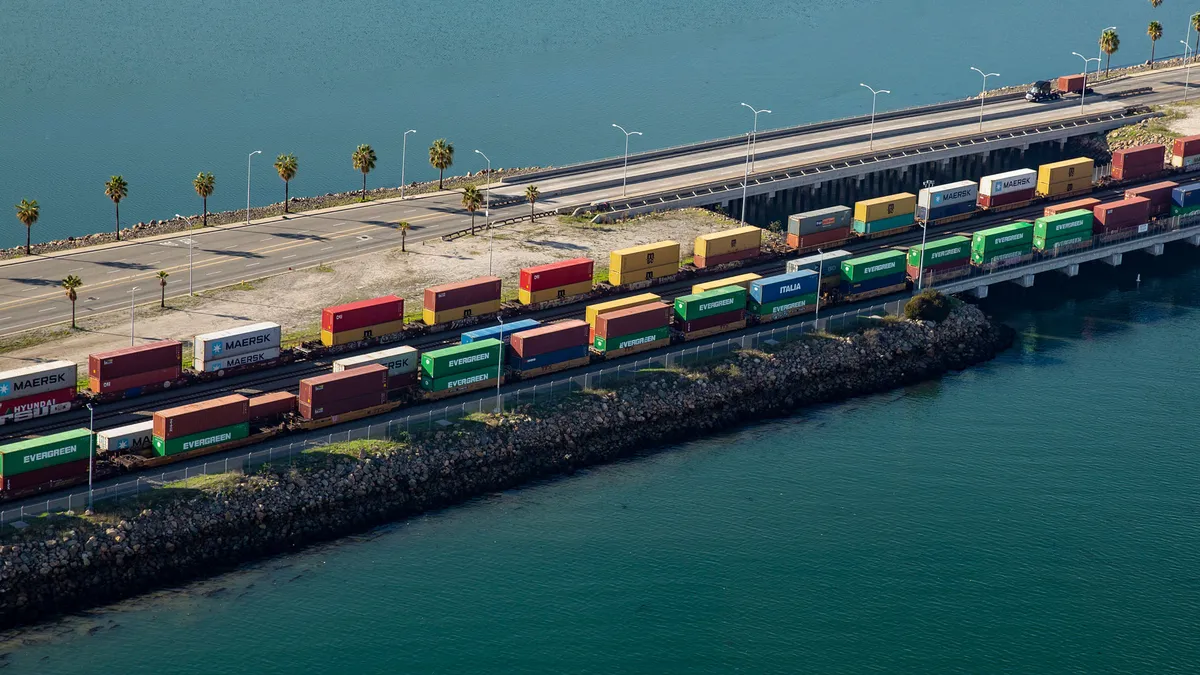The United States has agreed to stay in the Universal Postal Union (UPU), averting a tectonic shift in global e-commerce. But a less dramatic, rumbling kind of change is still coming to the global postal order.
When the third-ever extraordinary congress of the UPU voted to adopt a compromise plan — deemed Option V, for victory — the 192 member countries ushered in an era of international mail wherein eventually, all members will have the chance to self-declare their terminal dues, or effectively, the rates that foreign postal services will charge for service when mail or a parcel crosses their borders.
The U.S. will be the first nation granted this ability. A UPU spokesperson told Supply Chain Dive the U.S. must submit self-declared rates for validation by March 1, 2020, and those rates will be published by April 1, 2020, then go into effect July 1, 2020.
The grievance that U.S. officials cited in their intention to leave the UPU was the mandated cheaper rates granted to countries designated as "developing" — namely China. Before Option V, packages originating in China weighing less than 4.4 pounds were cheaper to ship to the U.S. than packages of the same weight traveling within the U.S.
New rates will initially be capped at 70% of domestic rates with the option to increase 1% every year up to 80% — meaning some international shippers will maintain the advantage the administration objected to, just a much smaller one.
Shea Felix, director of Stamps.com's GlobalPost program told Supply Chain Dive a 100% max would be better than 70%, but the new rules will level the playing field somewhat between domestic shippers, the international shippers from countries previously shown favor by the UPU before Option V.
The rest of the world will have the same opportunity to self-declare if each country so chooses (or stick with the status quo) beginning in January 2021.
The shift in policy puts the power in the hands of mail importers like the U.S. and not heavy exporters like China — which was the aim of the Trump administration's threat to leave.
"The proposal adopted by the Universal Postal Union is aimed at eliminating economic distortions for the distribution of goods, by establishing parity with comparable domestic services for inbound packet volumes," a USPS spokesperson told Supply Chain Dive. The spokesperson did not respond to inquiries regarding when USPS will notify shippers of the inevitable upcoming rate changes.
Business as usual, for now
Since countries other than the U.S. must wait until 2021 to change their rates, USPS rates and negotiated-service agreements (threatened with cancellation in the run-up to the Extraordinary Congress) are safe for now. USPS often announces annual post-peak rate hikes in mid-October so industry players are waiting for those any day, but for all intents and purposes, it's business as usual.
Though the USPS has not confirmed rate hike timing or how many rate changes are coming in 2020, Alex Yancher, CEO of Passport Shipping, told Supply Chain Dive he expects more information soon.
"We expect the USPS to bake-in the potential July 2020 increase into the January increase to avoid two increases, which would be very disruptive for businesses and decision-makers. We should find out their approach by the end of October," said Yancher.
Whether the announcement comes now or in January, industry stakeholders expect the U.S. to raise rates as soon as possible in July. The question remains, which countries will do likewise?
"I think heavy importers with big consumer bases like potentially Canada — I think that's where you're going to see some logical rationalization. It's really going to be a case by case basis," Glenn Gooding, president of iDrive Logistics, told Supply Chain Dive.
When China is able to self-declare, Gooding doesn't expect fireworks. A "tit for tat" scenario, as seen in the current U.S.-China trade war, is unlikely, he said, because as a mail exporter, China doesn't have much to gain from raising international postal rates. Such increases would affect the growing number of companies that drop ship light items like apparel directly to consumers in the U.S., but major paradigm shifts are unlikely, said Gooding.
"That kind of business will still be viable after July," he said.
Accounting for risk in the new postal paradigm
The size of the disruption posed by the mere possibility of the U.S. leaving the UPU was immense, and some service providers were more prepared for the worst-case scenario than others.
Stamps.com had set up a full contingency plan to enable any service disruptions for clients shipping across borders. The e-commerce enabler and postage reseller took the Trump administration's announcement of its intention to leave the UPU seriously a year ago when the initial threat was issued. The company had been quietly building relationships and hashing out deals with international carriers before the announcement as a hedge against relying so heavily on one carrier (USPS) and the notice of possible UPU exit put that work into high gear.
"We felt that having this big a risk for shippers was too much for us to just wait and see," said Felix, who is now in charge of Stamps.com's new GlobalPost network. There were no big marketing campaigns or podcast ads for GlobalPost, but Felix and the team let shippers know they were ready in the weeks leading up to the Extraordinary Congress. The shipper experience wouldn't have changed, but the rates and carriers would have shifted for internationally-bound parcels.
It may seem less necessary now, but Felix isn't sorry Stamps.com put in months of work to develop the network and said the company won't be abandoning it anytime soon.
"I think this learning activity for us was pretty big — that we need to make sure our shippers have multiple options for these type of products. So we're going to continue to develop GlobalPost," he said.
GlobalPost gives Stamps.com a competitive set of rates it can compare to USPS as the U.S. and other countries self-declare, said Felix. If the GlobalPost rates are favorable, Stamps.com will be able to offer customers an alternative.
For others in the industry, the Trump administration's UPU threat was an anomaly we're unlikely to see again.
Gooding told Supply Chain Dive this situation was more of an aberration than a new risk supply chains need to always be prepared for. Still, he said contingencies are never a bad idea, and shippers can ask carriers and other service providers what's on offer other than USPS.






















